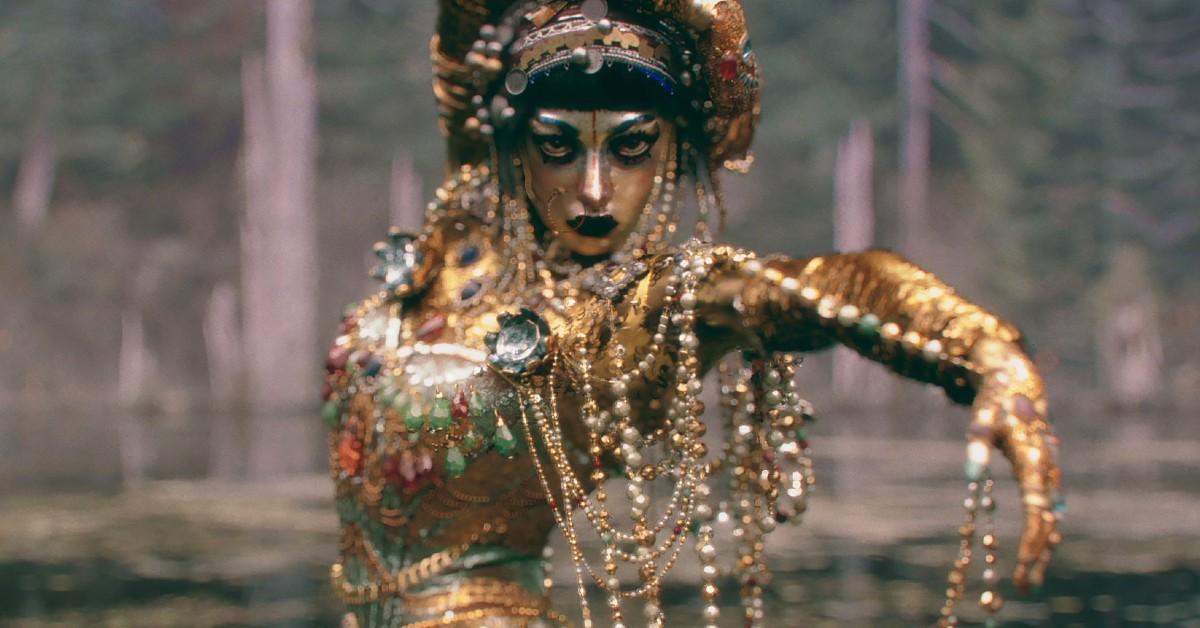In creating the setting of PSYCHOPOMPS, I began with thinking of the dead. When I imagine death, I recall thick yellow sheets blocking foreign eyes, void decks with white plastic chairs, the incense smoke and quiet chatter, and the taste of fried noodles, coming to us in bulk from a nearby hawker centre. I recall circling the coffin, the tiny window revealing wisps of mould and fungi that had begin to eat away at a week-old corpse. I sit there, in clothes that would be burnt with piles and piles of paper ingots. In this conception of death, all I could see was my culture and my home. This inspired the Southeast Asian setting of PSYCHOPOMPS, which fundamentally is of death.
Southeast Asia is a uniquely distinct aesthetic from the traditions of Tolkien and Lewis. Rather than rolling vistas and carpets of snow, it is a land of overgrown jungle, and a thick, humid heat that is broken by torrents of pelting rain. Monsoonal storms rage, transforming sun-baked earth into wet mud. It is cramped, a land of neighbours and rivals, all of which bear the cultural and historical marks of centuries of different colonisers. It is a patchwork land, melting together under the same ever-scorching sun. This mongrel aesthetic, a bastard amongst purebreds, is a key mark of a confluence of different influences. Being caught in between the West and East has led to a multi-faceted and at times, confused identity. An infinity of languages, pidgins, dialects and patois are spoken in the markets, stocked by the ships that rush in and out of ports. It is a land of many gods, and a necessary acceptance of this multiplicity. Trade and the availability of spices and commodities fuel its rapid growth and place in the world market. A landlocked region leads to insularity, a certain narrow-mindedness that comes with limited entry and exit. Access to the waters of the world means access to the entirety of the world.
This presents an interesting setting, one in which many different cultures and histories can be explored. Certain European media have been criticised for a lack of diversity and/or shoehorned diversity that is incongruous. This may be an unfortunate result of the relative homogeneity of certain cultures but also a moot point when we deal with the results of years of colonisation and cross-cultural pollination. The messy connections between neighbours, infinitely similar and different, create the perfect environment for conflict. The fundamental beauty of Southeast Asia is in its density, the cacophony of contrast and mild dissimilarity of an urban environment expanded to a region. We could compare this to Western Europe, where one might take a road trip and end up visiting two different countries within the day. Yet there is perhaps less of the familiarity between states, less of that shared cultural identity. As much as the British and French seem to revel in their rivalry, they are siblings born of the same family. Southeast Asia's individual countries behave more like cousins, raised apart in different environments.
Returning to the topic of the dead, PSYCHOPOMPS's central conceit of the Resurrection is tied to the Southeast Asian fascination with death and its relative impermanency. Fundamental to the Buddhist and Hindu elements of religion is the transitionary state of death. Even more fascinating is perhaps the fact that we speak with the dead. The dead are not far away from us in Southeast Asia. Our ancestors remain fully aware of us and we are able to interact with them, via prayers, burnt offerings and curses. Some Indonesian tribes, like the Torajan, even go as far as to keep their dead mummified for years after they die, dressing and interacting with them as per normal. Monks are buried into statues or displayed in glass coffins to be given gifts and prayed to. PSYCHOPOMPS takes this to a fantastic extreme. What if they physically came back? What if death was no longer final, merely a transitionary phase? What if we when we pray to the dead, they can physically answer?
Adding to it is the Buddhist concept of Samsara, the world and the cycle of life and death. This world is made of suffering and the cycle perpetuates this suffering. Stagnancy is thus significant, a sign of unwellness and unproductivity. Breaking the cycle is paramount, a means in which we can escape the repetition of society, the world and the self. This lent itself very well to the idea of the "punk" genre, centred around the opposition to structures and establishment. The cycle keeps everyone in their "rightful" place, distributing as a divine machination. Yet, if the mechanism is omnipotent but not omniscient, capable but not competent, then the only means of right is to rebel against the mechanism itself. Capitalism, discrimination, bureaucracy are all symptoms of this mechanism and the setting aims to discuss the opposition to this. PSYCHOPOMPS is the cyberpunk movie, with ghosts and swords rather than A.I and lasers.
The heavy, humid air that hangs almost solid in the midday sun, is perhaps the most apt representation of this stagnancy.

No comments:
Post a Comment